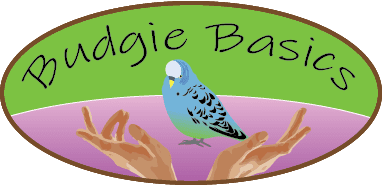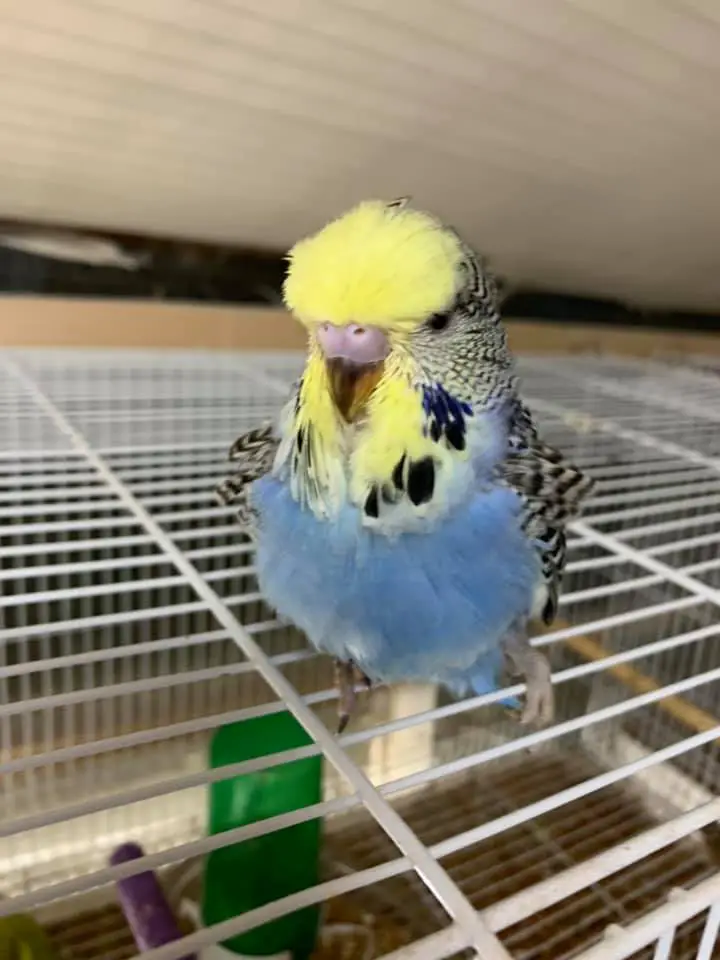Introduction
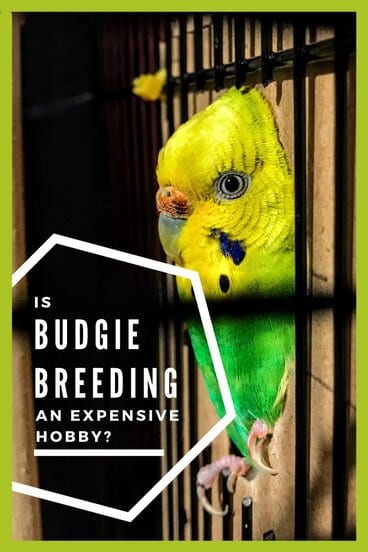

Budgies, or budgerigars, are one of the parakeet species that are native to Australia and can be found naturally in flocks in the open woodlands, grasslands and scrublands down under. Wild budgies are slightly smaller in size when compared to their domesticated relations, and their predominant colour is green while captive birds range from green, yellow, blue and white with the rarest being the blackface budgie.
Budgies make fantastic pets. Alongside cats and dogs, budgies are one of the world’s most popular pets due to their natural beauty, size, and low-cost factor. Who wouldn’t want to hear the happy sounds of chirping birds calling to one another?
Budgies are a species that is relatively easy to breed at home, so if you are an avian lover and looking for a new hobby, budgie breeding might be the perfect answer. Some people decide to breed show birds for exhibitions, and some do it for the love of the pet and naturally it becomes their hobby.
So if you are interested in breeding budgies as a hobby, you are most likely asking yourself, “Is budgie breeding an expensive hobby?”
Equipment Required
The truth is, very little is actually required when you start out on your budgie breeding journey. Initially, the most costly item will be setting up the cage and you’ll only need to purchase more if you want to breed more birds.
Your basic requirements include:
*Cage or aviary
*Perches and toys
*Nesting box
*Food and nutrition
*Of course, the budgies
Budgies
If you are a beginner breeder, it makes sense to start off with one pair of breeding budgies so you will not be overwhelmed and can become an expert in looking after your birds correctly. Ideally, obtain your birds from another breeder so you can be sure of their age as budgies should not breed before they are at least 10 months old, and not older than four years.

Even though a pet shop will most likely be cheaper, a breeder will know how old their budgies are, a pet shop would most likely provide you with a best guesstimate based on information they were provided with.
When selecting your budgies, check to see that they look healthy, are active, display sociable behaviour, have beautiful plumage, clean nostrils and beak and the correct number of toes and a clean vent (the area from which the bird deposits its droppings).
If you really are not sure or feel you need a second opinion, you can take them to a vet for an assessment.
Housing
You need to provide your budgies with a large enough cage to enable them to live comfortably and happily. Just like herding humans into a small space will create conflict, the same will happy with your birds if they are too cramped.
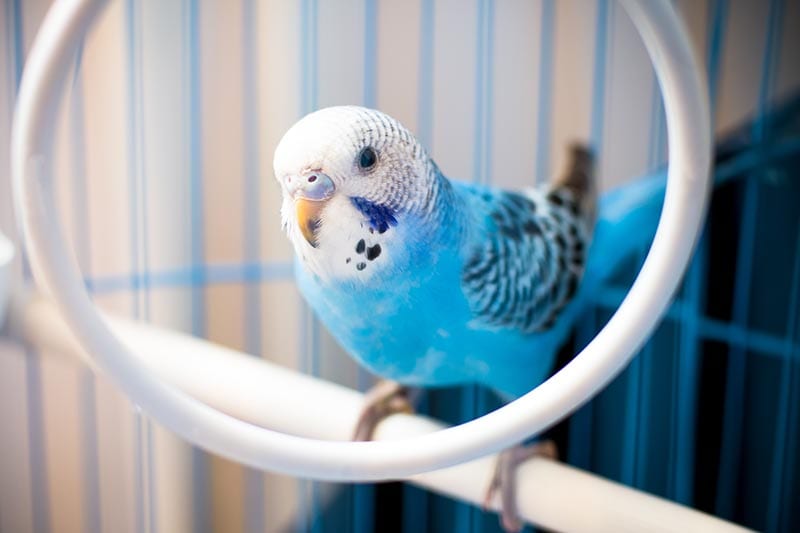
Do not have a cage smaller than 30x18x18 otherwise they are likely to start fighting with one another. In addition, there should be enough space for them to lay their eggs and sit on perches, and also enough space on the floor to provide a variety of shallow dishes available for the chicks when they start foraging.
Stay away from harmful plastic products and rather provide your birds with wooden toys, ladders and perches which they can chew on safely.
A second cage should be purchased for the male to be moved to once the chicks have been weaned. Even a third cage is recommended for your breeding budgie pair incase of fighting or should any other problems arise.
Once you become more experienced with your budgie breeding, you might consider including an aviary into your budgie breeding arsenal kit if you have sufficient space.
Nesting boxes
Selecting your nesting box is predominantly a matter of personal taste, but there are some points that you need to consider.
The nesting box needs to be dark on the inside to ensure that female hormones for ovum maturation are stimulated. Ensure that your budgies can easily access the nesting box without getting injured and that the box has a hinged lid so you are able to open it and check on the eggs and the chicks.
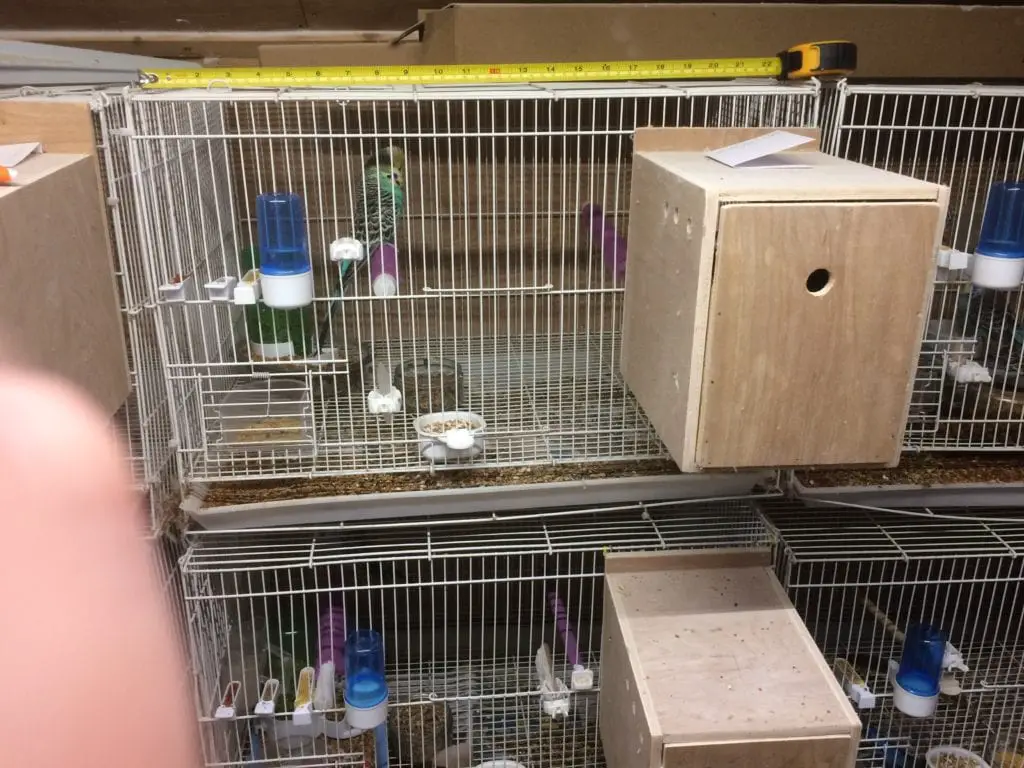
You can purchase nesting boxes from other breeders or your pet store (Tim: affiliate link), however it is simple enough to make your own as you can see in this post (Tim: interlink) where I’ve shown you how you can build them yourself out of wood.
In the wild, budgies are minimalist nesters and do not require more than a safe space, a dry floor and minimal soft bedding. The best nesting material for your budgies at home is sawdust from untreated timber or lumber, as sawdust is highly absorbent and will soak up and absorb moisture and odors. If this is not possible, you can choose the frugal route and safely provide them with shredded paper, however steer clear of using toilet paper.
The nesting box and sawdust will not cost you more than a few dollars.
Food and Nutrition
It is extremely important to keep your budgies healthy if you are going to provide them with an environment for successful breeding.
Food for your breeding budgies is inexpensive because they are small birds and do not eat a lot and do not require any specialised diet.
While budgies do eat seed, vary what you feed them as a diet of seed alone can lead to obesity, diabetes and other complications which will send you straight to the vet.
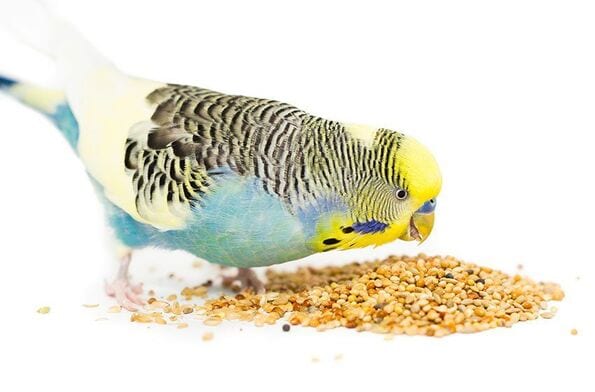
Provide your pet birds with a healthy variety of fresh foods in addition to seed. In the wild, budgies feed on whatever they can find in the grasslands. Mimic the grasslands by soaking seeds to kickstart their growth and your budgies will happily feed on this as well.
You can download our budgie feeding guide here to assist you (Tim: internal link of your own download so you can add your audience to your email database).
In addition, budgies need amino acids in their diet which supplies them with the protein that is needed for muscle growth, organs, feathers and hormones. In the wild, budgies will feed on small insects which will provide them with their necessary amino acids but they cannot forage in your home.
One solution is to feed your budgies dried mealworms or dried crickets. Alternatively, while they are moulting or nesting you can provide them with small amounts of egg. Ensure that it is cooked to reduce the risk of salmonella poisoning and cook up a delicious treat for them. They are also not fussed if it is served hard-boiled, scrambled or made as a delicious omelette (just leave off the condiments).
So essentially, you will be feeding them a mixture of bird seed, fruit and veg, mixed sprouts and little bits of cooked egg. And for a treat, you have the option of delicious snacks of dried mealworms and crickets.
In Conclusion
To keep and breed beautiful budgies does not mean you have to spend a lot of money. In fact it is a not expensive to breed budgies as a hobby at all. Once you have your cages established, and besides for food, you will only need to replace chewed up perches and wooden toys occasionally.
The most expensive part of budgie breeding is if you need to visit your vet (Tim: possibly pet insurance, affiliate link?), but with love and care and healthy maintenance of your birds, this should be a rare occurrence.
*********
